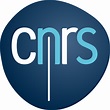Le Casimir Wreck Underwater Photographs for June/July 2014 Project.
Page 4
Six bronze clench bolts were found during the survey. The first was a well eroded bronze copper alloy clench bolt missing the clench.
Two copper alloy square headed nails were found, which were given artefact numbers: PBW/2014/Shi/NF/11811 and PBW/2014/Shi/NF/11812. The first was bent and both of them were well worn and eroded In addition one copper sheeting copper alloy nail, 28 mm long was recovered and given artefact No:PBW/2014/Shi/NF/11815. Two flattened copper alloy thimbles, probably one found inside the other and were given the artefact No: PBW/2014/Car/NF/11817 and PBW/2014/Car/NF/11818.
During the survey the Team was focusing on the ships construction. For the area uncovered it was clear that A0,B0, C0 & D0 had been looted in the past and that the floors and futtocks had been removed from these squares. Survey squaresC1 and D1 were also missing the floors and futtocks which is also as a result of the past looting. The first frame found was in survey square C2 and D2 and was eroded and eaten and so not much information remained.
Whilst the floors and futtocks were missing the Team could determine their original location from the positioning of the trunnel holes. The wooden trunnels were used to position the floors and futtocks and attach them to the bottom planking. In a number of cases the trunnel holes were empty and were full of sand. At present the Team are not able to determine if the trunnels were missing because they were attached to the floors and futtocks and were removed then these frames were destroyed by the looters, or if there were missing in the first place. Some of the trunnel holes were indeed located poorly, with some found to be close to the edge of the planking resulting in a week fixing. In other locations the Team found trunnels inserted into other trunnels, one assumes by accident. This severely reduced the strength of the trunnel and the join of the two timbers. On one location the original round trunnel had been compressed into an oval, by the lateral force of the timbers indication a lateral force which should not be in that location.
Team member Cristina heading back to the dive boats on Le Casimir Wreck site after a busy dive.
Please go to page 5 to continue.
ADMAT's maritime archaeological work on this wreck site was assisted by ADMAT-FRANCE a non profit organisation based in the Institut de Paléontologie Humaine, Muséum National d’Histoire Naturelle, Paris.
ADMAT-FRANCE is a sub division of the Anglo ~ Danish Maritime Archaeological Team
ADMAT is delighted to have an association with Muséum Nationald’Histoire Naturelle at Paris, départememt Préhistoire, UMR-CNRS 7194.

























